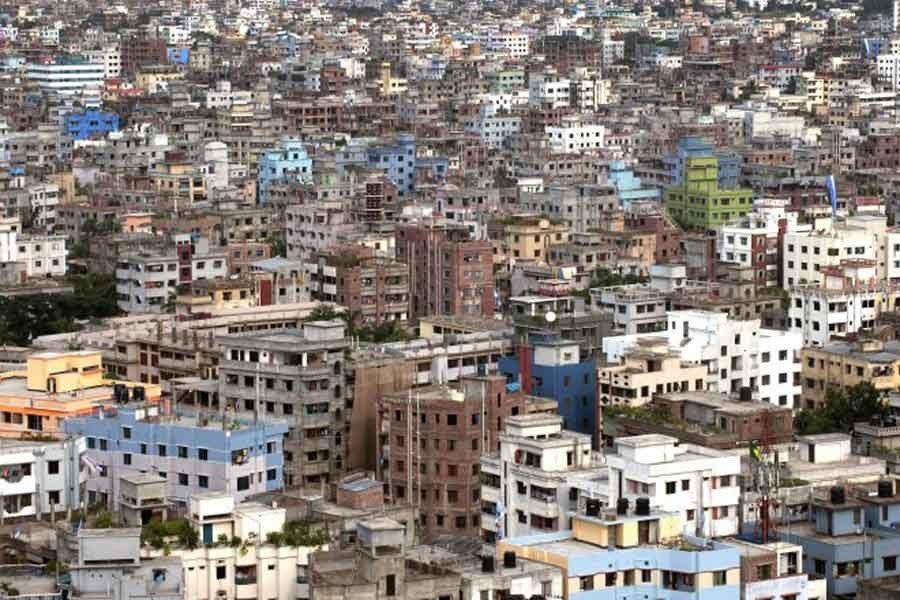One of the big causalities of heavily concentrated urbanisation in Dhaka is sunlight. No matter how strange it sounds, it is a reality. The sunlight turns into a scarce commodity in the city of Dhaka. Despite being a natural resource to which everyone has equal right of enjoying the benefit, it becomes gradually difficult for most of the inhabitants to bask in the sunlight liberally and proportionately. As Dhaka and other cities are growing taller and denser, dark shadows on the low buildings in the immediate vicinity are lengthening. The high-rise buildings are blocking the sunlight to those modest neighbours.
The outbreak of Covid-19 in 2020 reminded people that sunlight is the biggest source of Vitamin-D which is necessary to develop a strong immune system. In Bangladesh, though winter and rainy seasons do not allow people to have uninterrupted sunlight for three months, it is amply available for nine months of the year. This should be sufficient to get necessary Vitamin-D from the natural source.
It is scientifically proven that the human body needs a certain amount of sunlight to produce and use certain vitamins and minerals and plants require four to six hours of sunlight in a day for photosynthesis. Moreover, a building also needs sunlight for preventing algal growth on the walls as well as to power the solar panels, if installed.
The high-rise buildings, coupled with unplanned urbanisation, have already made the extraction of the vitamin from sunlight costly. Those who are living in the upper parts of high-rise residential apartments are able to enjoy the sunlight adequately. Residents of lower parts of the same building are not getting sunlight proportionately and some even do not get it at all. Moreover, the high-rise buildings also cast long and dark shadows on nearby smaller buildings, houses and streets virtually limiting or blocking the sunlight.
Lack of adequate sunlight poses health risks of various forms. Not only the human body is deprived of extracting vitamins, but also their houses sometimes become dampened. Residents have to switch on to the indoor lights even during the day all the time and drying the clothes becomes difficult. A maximum part of a sunny day is non-visible from the houses. The duration of daylight inside houses is less or even none in the case of those closer to the ground. During the rainy and winter seasons, the situation gets aggravated further. Even the five or six-storey buildings, constructed densely by flouting the rules, are blocking sunlight to one another in many parts of Dhaka.
Thus the shadows, created by taller residential and office buildings, turn the natural source of light into another variety of inequality. As vertical expansion in a densely populated country like Bangladesh is inevitable, it is not possible to stop the construction of high-rise buildings. What is necessary is not to allow the overshadowing of the quality of lives of the inhabitants. This requires legal protection of peoples' right to natural light. Advanced modern architecture along with planned urbanisation may offer some positive solutions to this problem.


